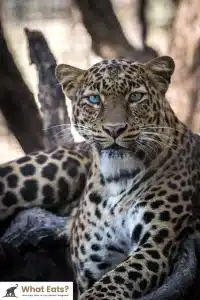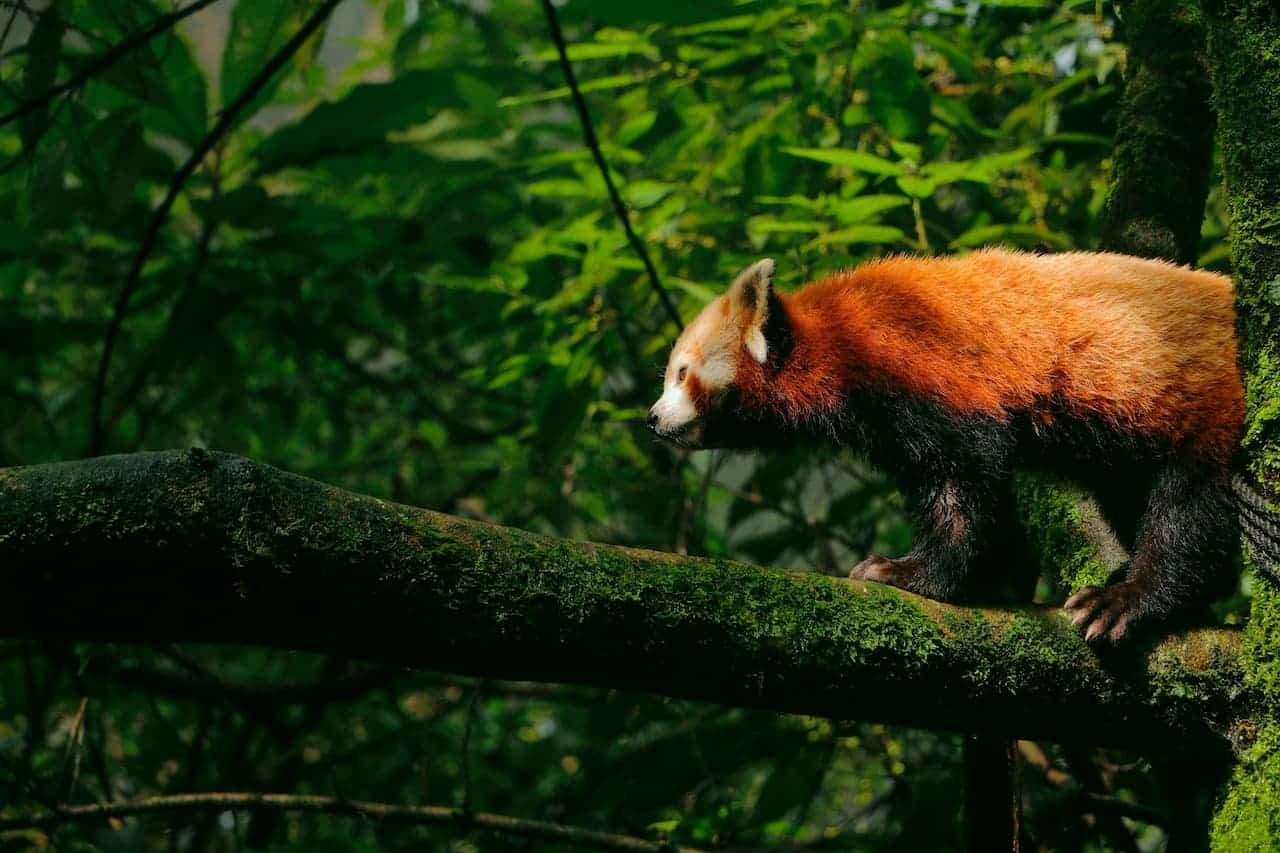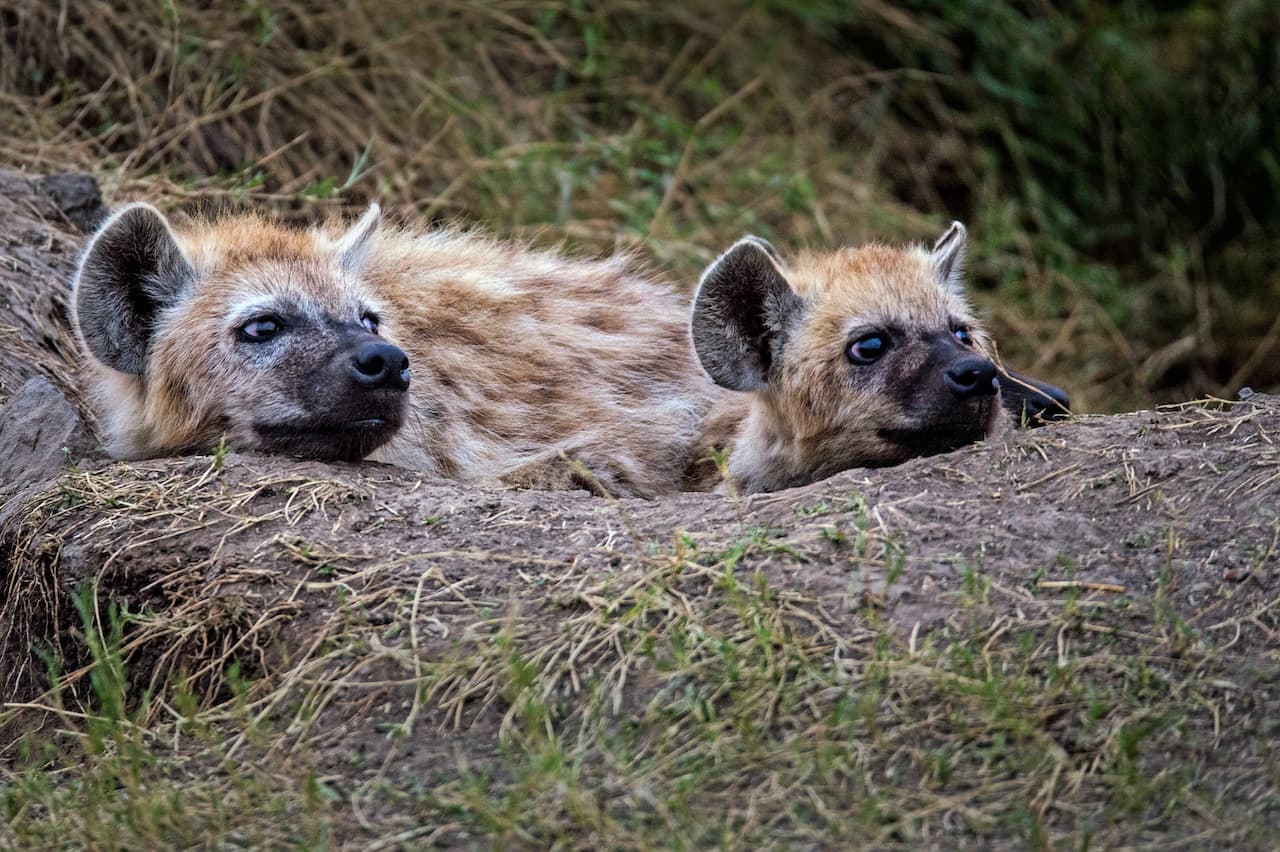What Eats A Leopard? What Do Leopards Eat?
Leopards are the iconic predators of Africa and Asia. It is a powerful cat, capable of taking on prey that are much larger than it. Even the biggest of beasts are threatened by larger predators, and people encroaching onto their territory.
This article will explore the varied prey of leopards, including mammalian and reptilian prey, along with avian, bird, and other avian species.
Leopard Predators
Leopards in good health have very few enemies who will confront them directly. Certain predators will attack cubs that are weak or injured.
Lions
Africa’s biggest cat, the lion can weigh up to 550 pounds, which is much heavier than the typical leopard. Due to their size and strength lions are able to kill leopards but these conflicts are rare. In most cases, lionesses kill solitary male leopards by ambushing them.
Leopards are likely to be viewed by lions as fierce rivals and a threat to their cubs. Due to injury risks, a single lion is unlikely to attack a leopard adult alone.
Tigers
The tiger is the top predator in Asia. It can weigh over 600 pounds. Tigers kill any leopard, regardless of age. They view smaller leopards to be competition. There are records of tigers killing leopards of all ages in their range from Siberia up to Indonesia.
Hyenas
When the opportunity arises, both spotted and stripe hyenas are known to kill and hunt leopard cubs.
Also, they may attack a single leopard. Even a single adult leopard can be attacked by a group of hyenas, as they are good pack hunters. The hyena will steal leopards’ fresh kills.
Humans
Leopards are increasingly coming into contact with humans as human settlements grow. When leopards threaten livestock or lives, they are usually lethally eliminated, either by poisoning, trapping, or shooting.
Each year, trophy hunters also kill hundreds of leopards. Humans are more than capable of defeating leopards with their modern weapons.
Other Leopards
Cannibalism has been reported among leopards. To eliminate rivalry and seize territory, dominant males kill the cubs of other males. Leopards that are sick or injured also run the risk of being eaten by other leopards.
Scavengers consuming Leopard Remains
To protect themselves, leopards drag their prey high into the trees and hide them among dense vegetation. Some scavengers will still feed on or steal leopard remains.
- The jackal is notorious for waiting near the leopard’s kill to grab a quick meal. Although leopards can easily repel a single jackal, the jackal is a nuisance.
- The talons of vultures are strong enough to break the hides and dislodge their prey. Circling above, vultures will quickly gather around any leopard kill that is left unattended.
- Hyenas use their jaws’ powerful power to eat leftovers and crush bones. Hyenas are well known for driving off leopards from incomplete kills.
- The Wild Dogs are able to hunt efficiently in packs, which can easily overwhelm even a single leopard. Leopards are easily chased from freshly killed carcasses.
- Crocodiles are always lurking near rivers and waterholes, waiting to snatch the impalas or deer taken down by leopards.
These scavengers, though not themselves predators, still exert pressure on leopards. They steal their hard-earned meals and force them to spend more energy hunting.
Leopard’s own Diverse menu
The leopard is an opportunistic hunter and will consume a variety of food depending on the habitat. They eat:
Mammals
Leopards’ primary prey is mammals.
- African leopards eat ungulates like wildebeest calves and impalas, as well as gazelles, gazelles’ calves and antelope. Even larger ungulates such as elands can be taken down by them.
- The leopard’s ability to climb makes him a common target for monkeys. Baboons and other monkeys are often prey.
- In Asia, small mammals such as rodents, hares, and hyrax are a good source of prey.
- If they wander near areas of protected preservation, livestock like goats and cattle can be easily caught.
Birds
Leopards are able to hunt both tree and ground dwelling birds.
- On the ground, flightless birds such as emus, bustards, and ostriches are captured.
- The leopards’ claws and jaws are used to grab perching birds such as turacos & hornbills.
- Sometimes, even the most formidable of birds like eagles and vultures are caught.
Reptiles
- Asian leopards, in particular, eat snakes. The diet may also include lizards, turtles of large size and frogs.
- Rarely, leopards have killed crocodiles as large as 2 meters. Most of the time, juveniles and young hatchlings will be targeted.
Fish
Leopards living near lakes and waterways have been seen wading in shallow water, grabbing fish with their mouths. Eaten are catfish, Tilapia, carp and other species.
Carrion
The leopards are quick to eat the carcasses left over from predators. It is an easy and convenient meal. These remains are often cached to be eaten later.
Humans’ Waste
When they are starving and have no natural food, leopards that live near cities or towns may feed on scraps found in garbage piles.
Hunting Techniques
Leopards use a variety of methods and skills to hunt down and kill their prey.
- The leopard can stalk very close to the ground before pouncing.
- Speedy Short Sprints: They are capable of reaching speeds up to 36mph in short bursts, allowing them to chase down fleeing predators.
- Swimmers – They are strong swimmers who wade in rivers and lakes, catching fish and aquatic animals.
- Climbing: Powerful climbers who drag heavy kills into the trees with their front limbs and jaws.
- They can take on prey that is up to five times heavier than their own weight with the help of massive paws.
- They are generalists and can adapt their hunting to anything, from antelope to rats.
- The kills are often hidden in the brush and up trees, to keep scavengers away.
- They can hunt in many different habitats, using a variety of techniques.
FAQs
Which are the main predators of leopards?
Although healthy adults are seldom preyed on, certain predators can pose a danger to vulnerable or young individuals. Leopards’ main predators include lions and tigers.
Tigers and Lions are strong and large enough to kill a leopard at any age. Hyenas that hunt in groups can also overwhelm leopards hunting alone. Most often, predators prey on young cubs and sick/aged adult leopards that are easy targets.
Human hunting, as well as habitat destruction and loss are now major threats to the leopard population. In retaliation, leopards who prey on animals or endanger human life are usually killed.
What is the process by which leopards kill and capture their prey?
The leopard has a diverse hunting repertoire, which allows it to hunt in different environments and successfully catch varying prey. The golden spots on their coat provide excellent camouflage when stalking. This allows them to get very close and then pounce with rapid speed.
The leopard is also an expert climber, capable of hauling large carcasses high into the trees to be stored using its powerful front limbs and jaws.
Swimming leopards will wait patiently in an ambush for prey to drink near waterholes. Near lakes and rivers, swimming leopards ambush prey.
Conclusion
Leopards that are in the prime of their lives may not be threatened by larger cats or humans, but young cubs and sicklier individuals as well as older leopards can fall victim to hyenas. These apex hunters must occasionally watch out for their rears.
The leopard is a dominating predator in all of its habitats due to his strength, agility, and incredible diet, which includes both terrestrial and tree-dwelling prey. The leopard is a universal symbol for adaptability and wilderness.






